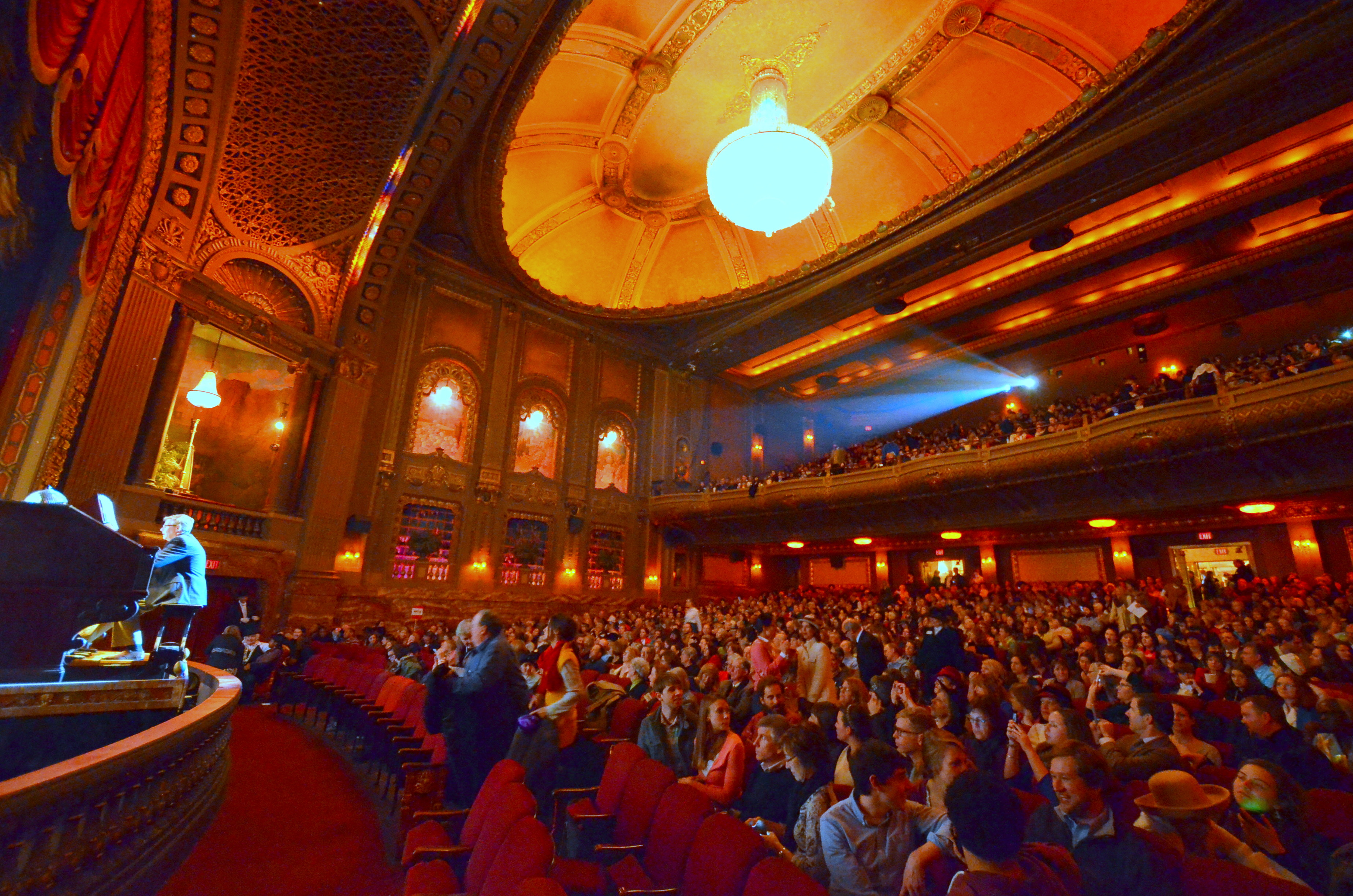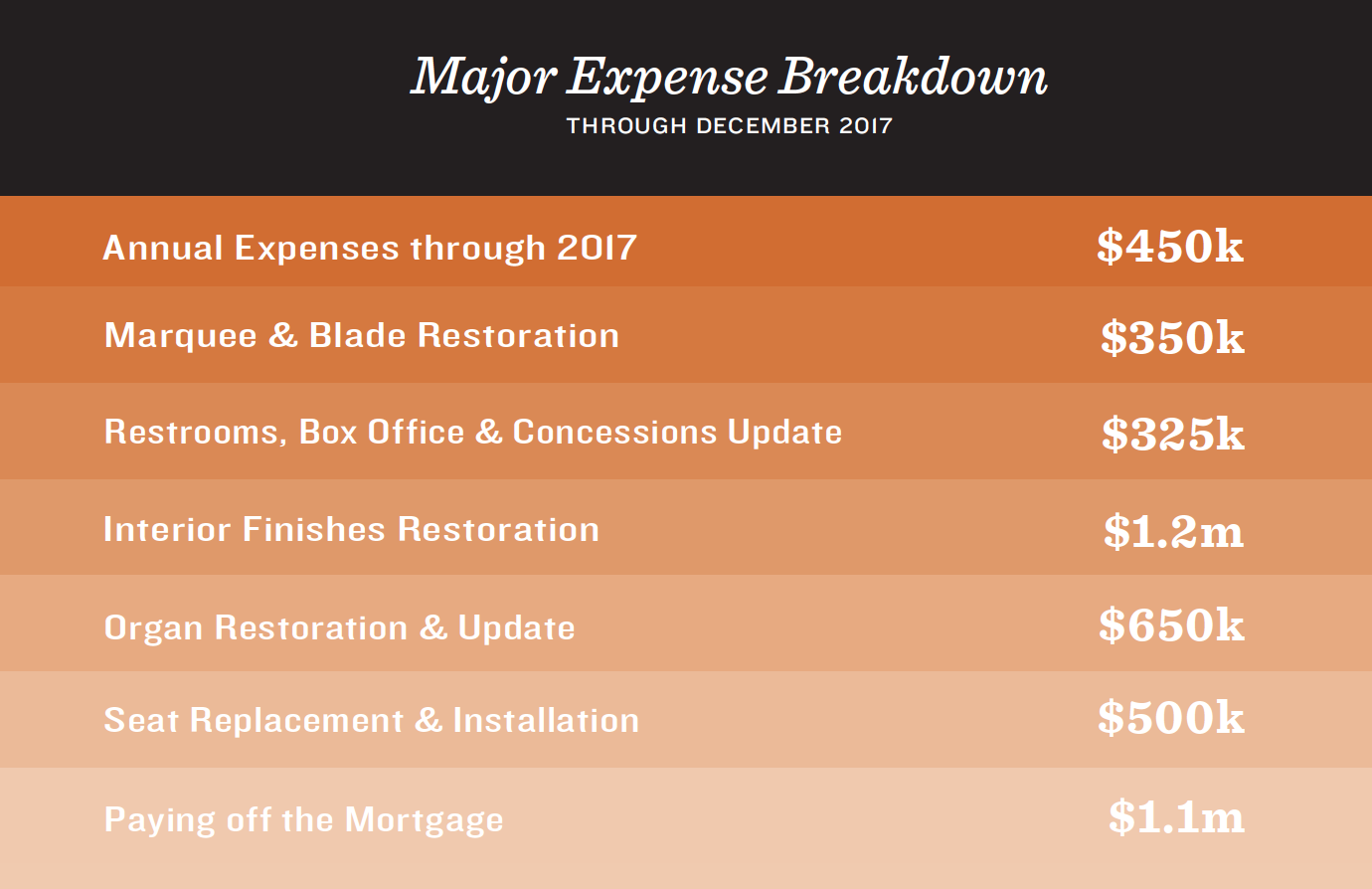Projecting The Byrd Theatre’s future
The loss of the landmark movie palace’s digital projector is a small setback in the midst of a grand restoration scheme.

Several days during the week of June 6th, 2015, Richmond’s landmark movie palace, The Byrd Theatre, was shuttered—leading many to speculate about what was going on. It turns out, the interior of the circa-1928 theatre was darkened because another component of the building, the digital projection system, was as well.
The Byrd Theatre Foundation knew the theatre’s DP100 digital projection system was on its last leg, but didn’t expect to have to replace it quite this soon.
After being closed several days, the theatre went old school, revving up its 35mm projector and showing second-run films such as Cinderella and The Boy Next Door for the time being. Byrd Theatre Foundation Vice President & Marketing Co-Chair Grant Mizell says films on actual 35mm reels are hard to come by in our digital world, and many studios have discontinued non-digital releases altogether, which limited the theatre’s options while solutions to their projector woes were weighed.
— ∮∮∮ —
Projecting the future
Despite the earlier-than-expected death of the projector, Foundation directors had factored replacement into its budget and fundraising initiatives in anticipation of such an incident–equipping members to begin searching for a suitable replacement system, which will cost anywhere from $40,000 and $75,000, depending on the model selected and whether the theatre purchases a new or used system.
“Within one week from the projector failing, we worked with operations to try some final fixes for reviving the existing digital projector, engaged our projection engineer to deliver several proposals, evaluated those proposals and put a deposit on new equipment,” says Mizell. “The last few years, the Foundation Board of Directors has concentrated on moving from fundraising based on need to fundraising proactively against upcoming projects.”
“2014 was a big year for us (in both foot traffic and donations), and we really started to estimate on a broad range, all the projects we could conceivably package under the state [historic] tax credit’s five year window.”
By June of 2014, the Foundation had raised $250,000 in private donations, which doubled to $500,000 as part of a matching donation program from The Cabell Foundation. The Byrd has far surpassed that fundraising level to date, Mizell says.
The Board began to prioritize upcoming needs, and started addressing them by replacing the building’s boiler. Next up was replacement of the HVAC unit (the building was operating on a system dating to 1966). The Foundation also invested money in creating a master plan to restore the theatre to its former glory.

Mizell says staff contracted with a number of specialists to ensure the theatre’s future renovations would preserve its character while ensuring they’re historically accurate. World-renowned paint analyst Susan Buck was brought in to study the building’s color scheme, and art conservationist Cleo Mullins was consulted for ways to preserve the theatre’s notable Brounet murals. Theatre restoration architects Martinez + Johnson were also brought in, along with The Monument Group to guide development plans.
The result of their findings and recommendations culminated in a document the Board calls the “Restoration Master Plan,” outlining interior updates from replacement of the theatre’s aging, arguably uncomfortable, seating to exterior upgrades like a new marquee and historically accurate signage.

— ∮∮∮ —
A Good Showing
The past year has been the Byrd’s “most engaging social year to date,” Mizell says. The theatre nearly doubled its year-over-year audience thanks in part to a popular midnight movie series that sprouted from a one-off event.
Last July, Center of the Universe Brewing hosted “The Big LeBYRDski,” featuring a midnight showing of The Big Lebowski. The event was so popular that it sprouted into an entire midnight movie series. “We turned COTU’s successful fundraiser into a partnership fundraising event series—Byrd and a Beer,” Mizell says. Other equally successful midnight features have paired local brews and cult classics like Fight Club, The Goonies, and The Breakfast Club.

The Byrd Theatre is thought by many experts to be one of the last remaining “grand movie palaces”—theatres built in the 1920s and 1930s, with rich and ornate architectural details that simply aren’t found in modern construction. In The Byrd’s case, they include gold leaf arches, marble walls, and an 18-foot, two-and-a-half ton Czechoslovakian crystal chandelier suspended over the auditorium, illuminated by 500 multi-colored light bulbs.
— ∮∮∮ —
With its rich history and recent upswing in support, the theatre should be on track to implement many of its planned renovations in the next several years. Foundation staff told Style Weekly in 2014 that many projects should be complete by 2017. If you’d like to donate to the theatre’s “Journey To The Seats” campaign, which aims to raise a total of $3.5 million, you can do so online.
Photo: Community Idea Stations
-
Recommend this
on Facebook -

Report an error
-

Subscribe to our
Weekly Digest




Notice: Comments that are not conducive to an interesting and thoughtful conversation may be removed at the editor’s discretion.